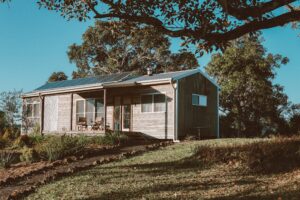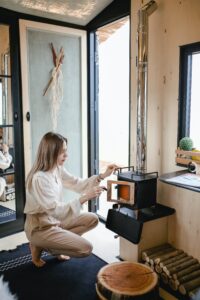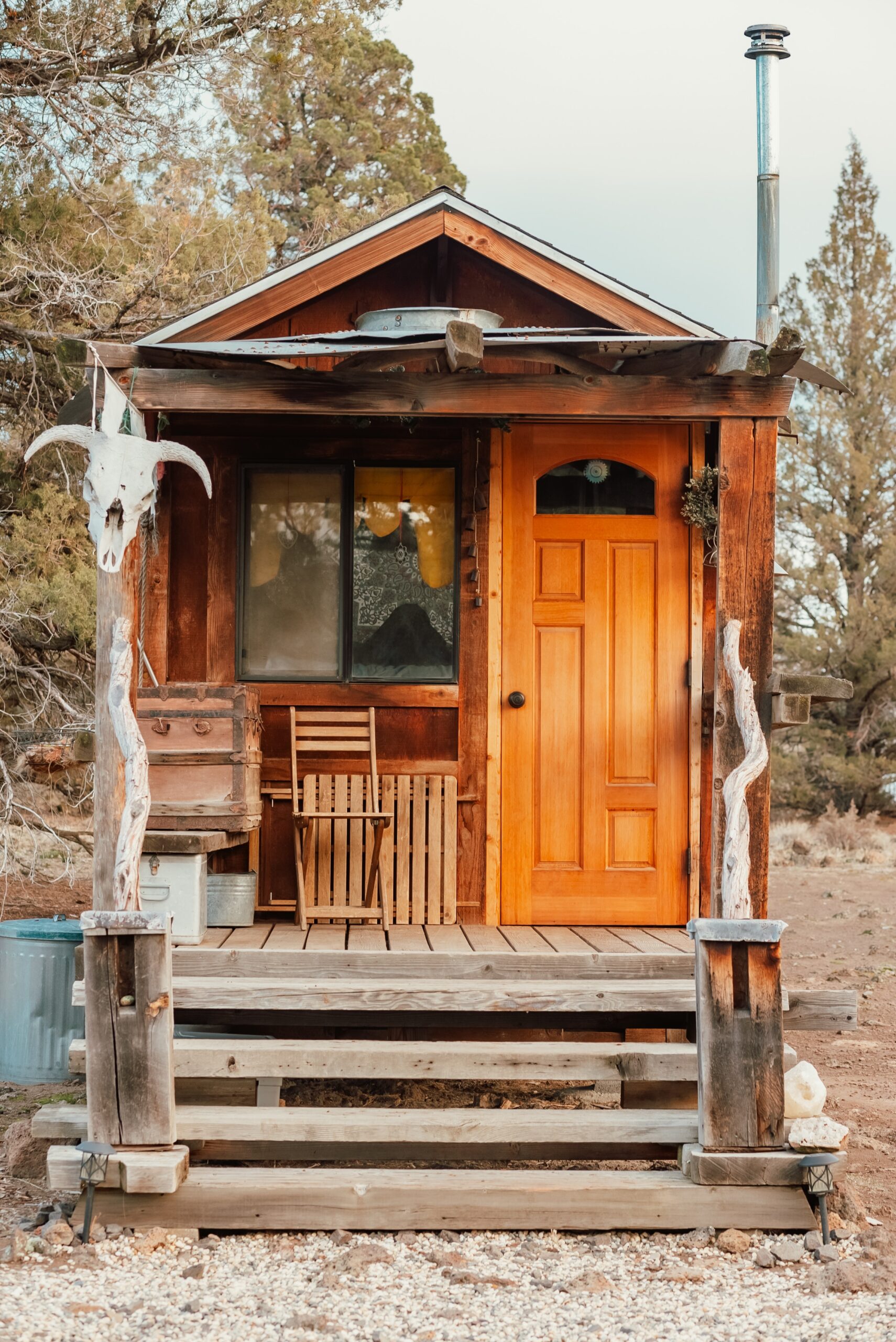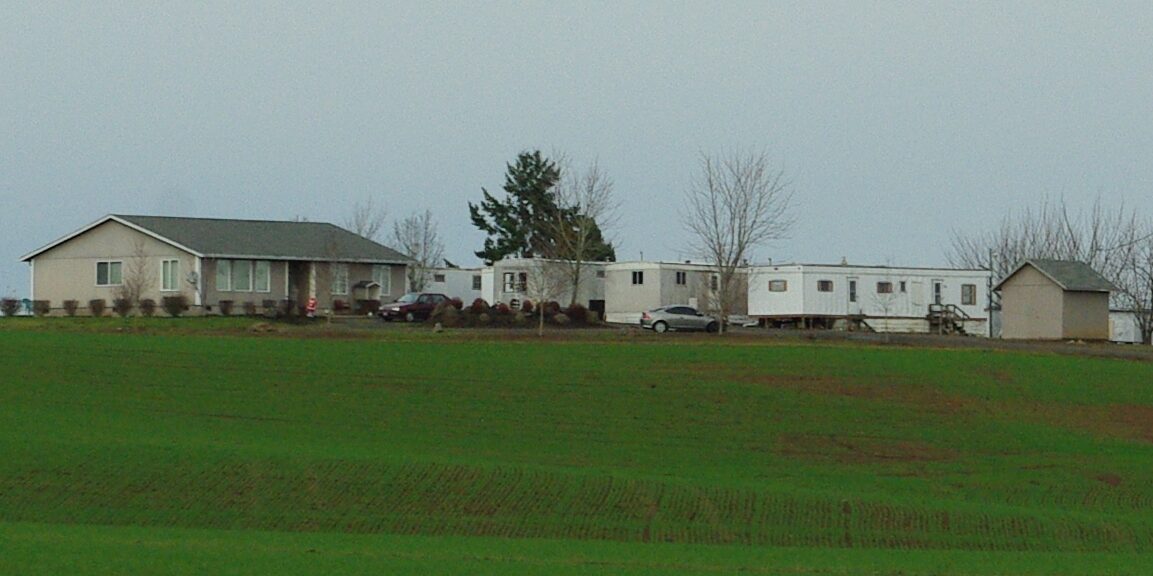What constitutes a tiny house? There’s no standard definition, but generally a “small house” is going to be 800-1,000 sf, and a “tiny house” is going to be 800 sf and under, with the further sub-classification of a “micro-house” as anything at or under 100 sf. (Most micro-houses are made for traveling, which is why they’re so small.)
Of course, this is subjective. A family of 8 living in a 1,000 sf is going to feel like they’re living in a tiny house, whereas a single person in a lofted house on a 10×10 sf footprint might feel like she has more living space than the family does.
Tiny homes come in an infinite variety, from underground, on wheels, in trees, etc. You can buy pre-built tiny homes or have one completely custom made for you, you can start with a shell (usually a storage shed) and customize the inside yourself, or you can build one from scratch using traditional or alternative building materials.

Why a tiny house? Most people pursue a tiny house because it’s affordable. Even if you have to buy one pre-made, it’s still much cheaper than a traditional house, meaning you can have a much smaller monthly payment (including smaller insurance and tax payments) for fewer years. A smaller house payment can allow people the freedom to start their own business, freelance, travel (in the case of the mobile tiny houses), or live with dignity on a small fixed income.
For people who are able or at least willing to learn how to do some things on their own, the DIY tiny house is much more manageable than a DIY normal house. If you start with a shell, you can reasonably expect, as a couple working weekends and maybe a few nights per week, to finish your tiny house and move into it in under a year. Even a single person working on it alone should be able to finish a house within 12-18 months. If you have larger chunks of time or handy friends, you can make even faster progress, moving in within a few months. Even building the shell yourself will not add too many months to the project if you’re already familiar with framing and roofing.

Another reason why tiny houses are popular is that they’re easy to heat and cool, which not only means lower utility costs at a time when they’re soaring (and getting scarce sometimes, too), but it means that you can take a tiny house completely off-grid much more easily than a large house. I live where it’s hot and very humid in the summer and air conditioning is the only thing that makes life worth living in July and August. When my mother and I were contemplating an off-grid tiny house for her retirement, the air conditioner unit and the square footage of the house were in direct opposition. The A/C unit had to be small enough and/or efficient enough that it could run off a relatively small solar installation 24/7. So that meant limiting the house’s square footage to be within the A/C unit’s ability to cool.
What about building restrictions and codes?
Many rural areas, especially those in less-regulated states (i.e. the South, the Great Plains states, Alaska, and the interior provinces of Canada), have few, if any building restrictions or codes. I live in such a county and I’m less than 30 minutes away from a decent-sized city and 45 minutes to an hour away from all parts of Chattanooga. So the freedom to build what you want may still be within commuting distance of a place to work. But even so, tiny houses are gaining in popularity, so while you may not be able to build one in an HOA subdivision, you may be able to get permits from your city or county to build in an unrestricted subdivision or on general residential land. Trailer parks accept mobile tiny homes, and tiny home parks/subdivisions are springing up everywhere.
 One thing I have seen multiple couples and families say is that they appreciate living in a tiny house because it allows them to be very close. One family said that they had the typical large American house and everyone was playing on their phones in their own rooms, with limited interaction with one another. Then they decided to break the mold and do something different before life passed them all by, so they got a mobile tiny house and went out on the road. And they suddenly found that they liked spending time with one another, and that outside was a whole lot more interesting than a cell phone when there was always something new to see. They said it totally changed their family dynamic and made them all happier and less stressed, and while they might miss a bit more space for clothes or a private place every once in a while, overall, they wouldn’t go back to their old lives.
One thing I have seen multiple couples and families say is that they appreciate living in a tiny house because it allows them to be very close. One family said that they had the typical large American house and everyone was playing on their phones in their own rooms, with limited interaction with one another. Then they decided to break the mold and do something different before life passed them all by, so they got a mobile tiny house and went out on the road. And they suddenly found that they liked spending time with one another, and that outside was a whole lot more interesting than a cell phone when there was always something new to see. They said it totally changed their family dynamic and made them all happier and less stressed, and while they might miss a bit more space for clothes or a private place every once in a while, overall, they wouldn’t go back to their old lives.
- Mobile Tiny Homes
- Semi-Mobile Tiny Homes
- Sheds Turned Tiny House
- Pre-Built/Custom Tiny Houses
- Homemade Tiny Cabins
Want to consider other housing options? Go here: Why You Should Consider Housing Alternatives


